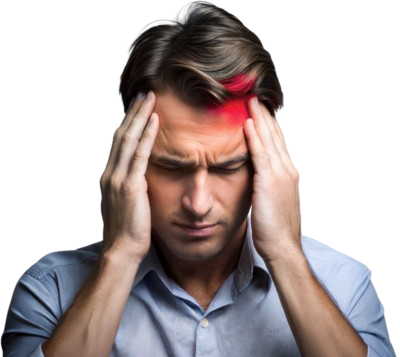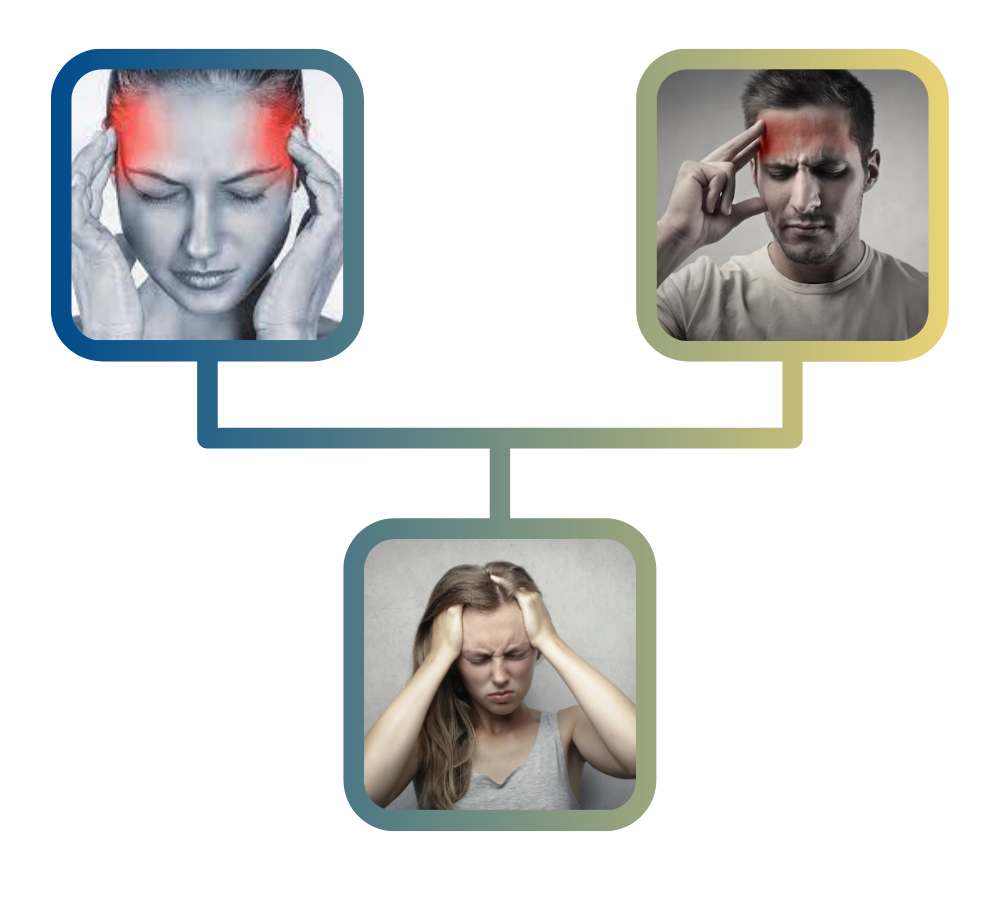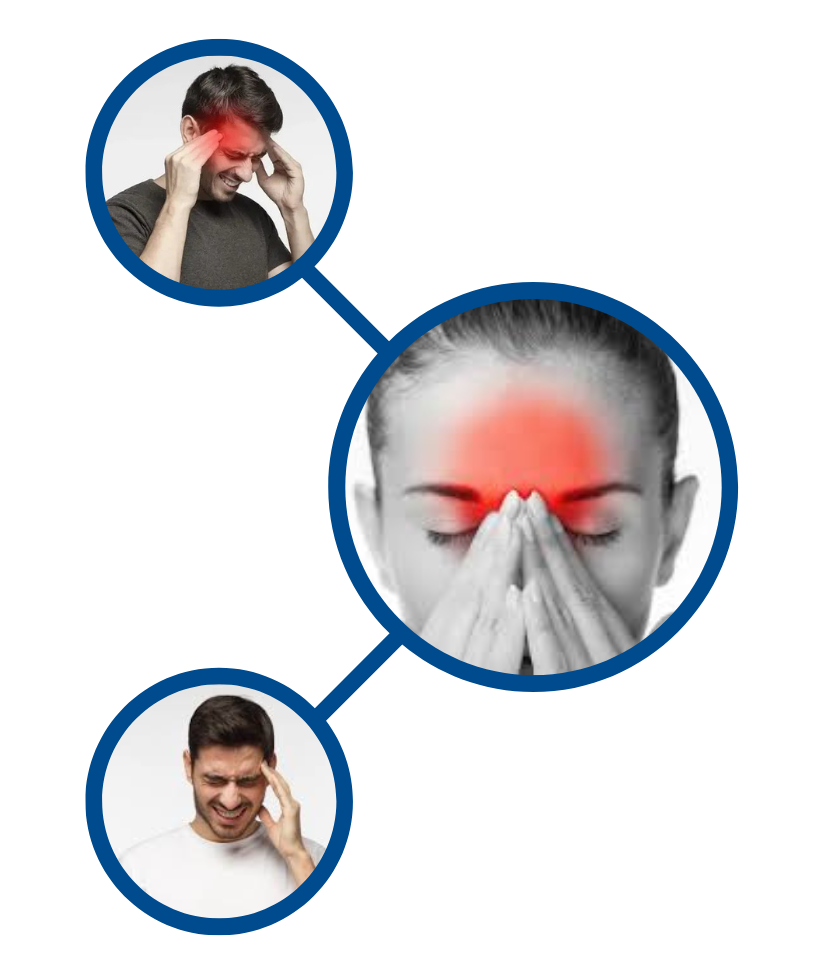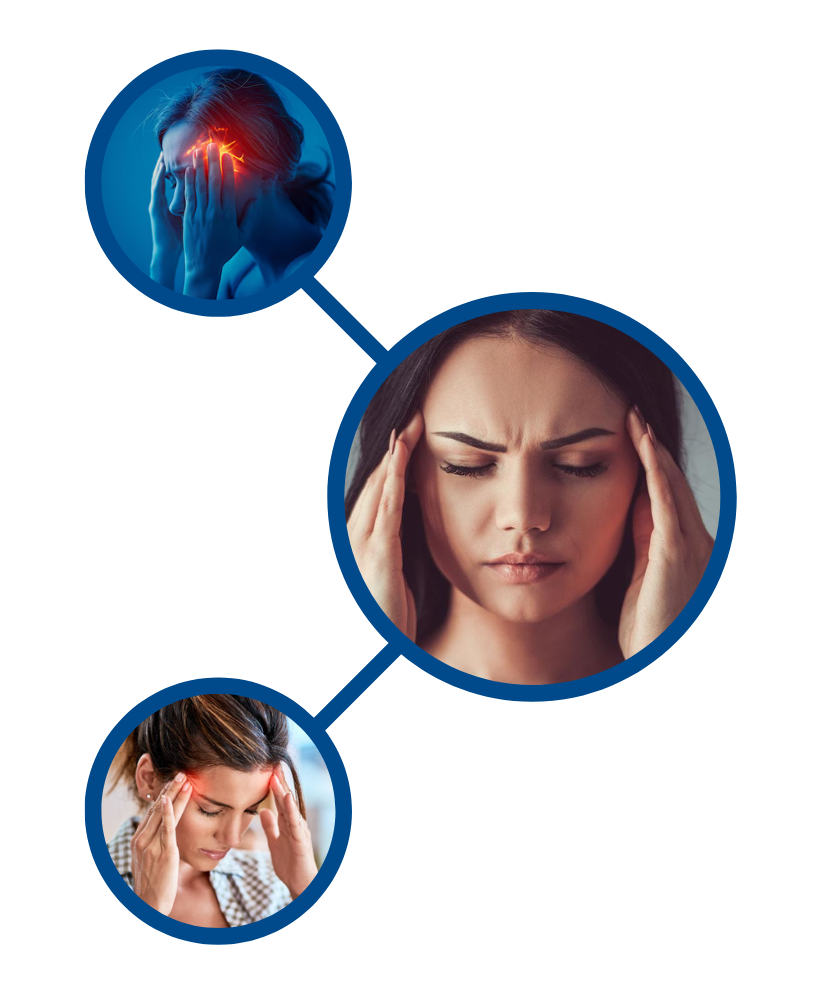“Migraines can be caused by changes in sleep pattern or by diet. “
- 216-417-3700
- Office Hours: Mon-Thu 7am-5pm


Migraines are common and typically almost always develop before the age of 30. They can occur every few days to once every several months and can range from mild to severe. A classic tell-tale sign that can accompany migraines are auras. Auras are a neurologic event that approximately 20 percent of migraine patients exhibit.
They precede the onset of the headache and may include visual disturbances, and changes in smell and hearing. Typically migraine headaches are limited to one side of the head, with the pain around or behind the eye.
Most migraine sufferers are female, with a strong family history of migraine headaches. Migraines can be caused by changes in sleep patterns or by diet. Foods that contain tyramine, monosodium glutamate, nitrates, chocolate or citrus fruits can trigger migraine headaches. Hormonal changes, even those caused by birth control pills, can also trigger some migraine headaches. No specific tests exist for the diagnosis of migraine headaches, although MRIs are helpful to rule out other causes of headache. Laboratory tests including CBC and erythrocyte sedimentation rate may be performed.
“Migraines can be caused by changes in sleep pattern or by diet. “
Migraine headaches are often confused with tension-type headaches. Tension-type headaches are often daily or continuous and are typically in the back of the head or are circumferential. The accompanying pain is often described as aching, band-like, and with a pressure-like sensation.Tension headaches are never accompanied by aura and rarely accompanied by nausea and vomiting.
Although they are often confused with migraines, cluster headaches are a little bit different. Their name is derived from the headache’s pattern … it occurs in clusters, which is then followed by headache-free periods. Cluster headaches are much more common in males, but do not appear to be genetically linked. They typically occur two to three times a day and can last for up to an hour. Sometimes, they even occur after a patient falls asleep.
There is an increased frequency of cluster headaches in the spring and the fall and these periods of headaches will typically last for 2 to 3 months at a time. Unlike migraine sufferers, cluster headache sufferers do not experience auras. Cluster headaches may be triggered by alcohol, nitrates, histamines, and high altitude. There is no specific testing for cluster headaches, but an MRI is helpful to rule out other conditions.


Recently, analgesic rebound headaches have been identified as a syndrome that occurs after discontinuing abortive medications or overusing certain medications. Patients who overuse the medications become unresponsive to both prophylactic and abortive migraine medication therapy.
Over the counter medications containing caffeine may be associated with analgesic rebound headaches. These types of headaches may become chronic and often occur as a transform migraine or transformed tension-type headache. They may even assume the characteristics of both types. Excessive use of any of the following medications may cause analgesic rebound headaches: acetaminophen, sinus medications, Butalbital, nonsteroidal anti-inflammatory medications, opioid analgesics ergotamines, Tryptan, and sumatriptan. There is no specific test for analgesic rebound headache, rather it’s a diagnosis by history.
Occipital neuralgia is typically related to trauma and is caused by inflammation of the occipital nerves that run along the posterior part of the cranium. Repetitive micro-traumas may also cause occipital neuralgia, such as neck hyperextension while painting ceilings or working on the computer monitor for prolonged periods of time.
Occipital neuralgia is typically described as chronic pain at the base of the skull with occasional shock-like sensations in the distribution of the occipital nerves. Tension headaches can be confused with occipital neuralgia. No specific testing is available for occipital neuralgia, but an MRI is useful for ruling out other conditions. Injection of the occipital nerve is helpful in confirming the diagnosis of occipital neuralgia.

TMJ can also cause headaches. It’s typically unilateral. It’s caused by the joint between the mandible and the lateral pterygoid that is termed the temporomandibular joint. The joint is innervated by branches of the mandibular nerve. Muscles in the temporomandibular joint include temporalis masseter muscle, external and internal pterygoids, trapezoid and sternocleiedomastoid muscles. Radiographs of the temporomandibular joint are helpful to rule out arthritis of the TMJ. MRI may provide additional useful information.
Cleveland Pain Specialists
Providing compassionate, expert care for chronic and acute pain management. Your comfort is our priority.
© Copyright Cleveland Pain Specialists & Steven Kozmary, M.D. Privacy Policy | Terms & Conditions.
Migraines are complex neurological events that involve various physiological mechanisms. They often result from a combination of genetic, environmental, and lifestyle factors that trigger changes in the brain's chemistry, leading to the characteristic symptoms of a migraine attack.
Research indicates that migraines may be linked to abnormal brain activity affecting nerve signals, blood vessels, and the release of neurotransmitters. For instance, the trigeminal nerve, which is responsible for sensation in the face, plays a crucial role in the development of migraines. Understanding these mechanisms can help patients identify potential triggers and manage their condition more effectively.
Preventive strategies are essential for individuals who experience frequent migraines. These strategies may include lifestyle modifications, dietary changes, and medications aimed at reducing the frequency and severity of migraine attacks.
Common preventive measures include maintaining a consistent sleep schedule, managing stress through relaxation techniques, and avoiding known dietary triggers such as aged cheeses and processed meats. Additionally, healthcare providers may prescribe medications such as beta-blockers or anticonvulsants to help prevent migraine occurrences.
Alternative therapies can offer additional relief for individuals suffering from headaches and migraines. Techniques such as acupuncture, chiropractic care, and biofeedback have gained popularity as complementary treatments that can enhance traditional pain management approaches.
For example, acupuncture has been shown in some studies to reduce the frequency of migraine attacks by targeting specific pressure points in the body. Similarly, biofeedback teaches patients to control physiological functions such as muscle tension and heart rate, which can help alleviate headache symptoms.
Identifying when to seek professional help for headaches is crucial for effective management and treatment. While occasional headaches may not warrant medical attention, certain symptoms can indicate a more serious underlying condition that requires evaluation by a healthcare professional.
Patients should seek help if they experience severe headaches that are sudden in onset, headaches accompanied by neurological symptoms such as confusion or vision changes, or if headaches significantly disrupt daily activities. Early intervention can lead to better outcomes and improved quality of life for individuals suffering from chronic headaches.